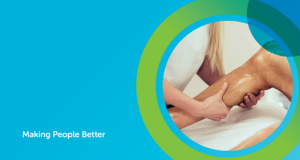Share

Sciatica is an umbrella term/diagnosis given for someone suffering from lower back pain alongside radiating symptoms down one leg. It is estimated that between 5-10% of people suffering with lower back pain may develop symptoms more consistent with true Sciatica. Some common symptoms of Sciatica include:
- Unilateral leg pain
- Pain radiating down back of the leg
- Numbness and/or paraesthesia in the involved leg
How does Sciatica pain happen?
At tissue level, there is compression or inflammation of typically the lumbo-sacral nerve roots (L4-S1) in which the sciatic nerve arises from.
What do you need to look out for?
It is important that you inform your physiotherapist or doctor immediately if you develop any of the following:
- Difficulty passing or controlling urine
- Numbness or pins and needles of the back passage or genitals, or weakness in both legs
- Unsteadiness on feet
- Severe pain which gets worse rather than better, and/or you feel unwell with back pain
What should you do?
- Limit Bed Rest – Pain might force you to rest but lots of bed rest is not a good treatment for your back pain.
- Stay as active as possible and return to normal activities as soon as possible. People with Sciatica who get active, and back to normal activities as soon as possible (including work) are likely to recover more quickly and are less likely to develop chronic (persistent) back pain compared to those who rest and do little exercise. You may have to put up with some pain whilst getting back to normal activities, but remember, pain with normal movement is not a sign of damage or harm.
- Manage Your Pain and Posture – Any medication that you take should be discussed with your GP or pharmacist. Paracetamol, Aspirin or Ibuprofen could be useful whilst you are getting back to normal activities. Try to maintain good posture. Use a rolled up towel in the small of your back when sitting or driving if this is comfortable, and try and avoid sitting for long periods.
- It is important with back pain not to worry too much. People, who keep positive and active, cope better and recover quicker! Physical treatments provided by your physiotherapist, such as manual therapy, may provide some short-term pain relief.
- If you have the above symptoms radiating down into one leg, a scan (such as an MRI) after trialling an intervention of physiotherapy may be warranted if there is no improvement in your pain, quality of life, and overall wellbeing.
- Surgery and injections are only very rarely needed
Treatment may vary, and the situation should be reviewed by a professional if the pain becomes worse, the symptoms change, or if significant pain persists beyond 4-6 weeks.
What will happen?
Generally, the prognosis is very good with someone suffering from Sciatica for symptoms to be relieved or significantly decreased over time. Time taken to recovery due to the high variability and impact of Sciatica on a person’s life. However, early intervention and action is crucial for better outcomes.
Can you prevent Sciatica pain?
Evidence suggests that the best way to prevent bouts of low back pain and Sciatica is simply to keep active, and to exercise regularly. This means general fitness exercise such as walking, running, swimming etc. It is also sensible to be ‘back aware’. For example, do not lift objects that are too heavy for you or when you are in an awkward twisting posture, keep objects close to your body when lifting, be aware of your sitting posture and take regular breaks to avoid sitting for long periods. Your physiotherapist can assist with exercise and advice specific for your problem.
Need further help or advice?
If you need any guidance on treatment options then please contact the Vita Physio team here
Related News
Vita is an award-winning, CQC registered healthcare provider














